CarEdge saved me over 4,500 dollars on a brand new Honda Pilot. I can't say thank you enough.
Price intelligence
Find a wide range of vehicle listings with market insights on new and used listings near you.
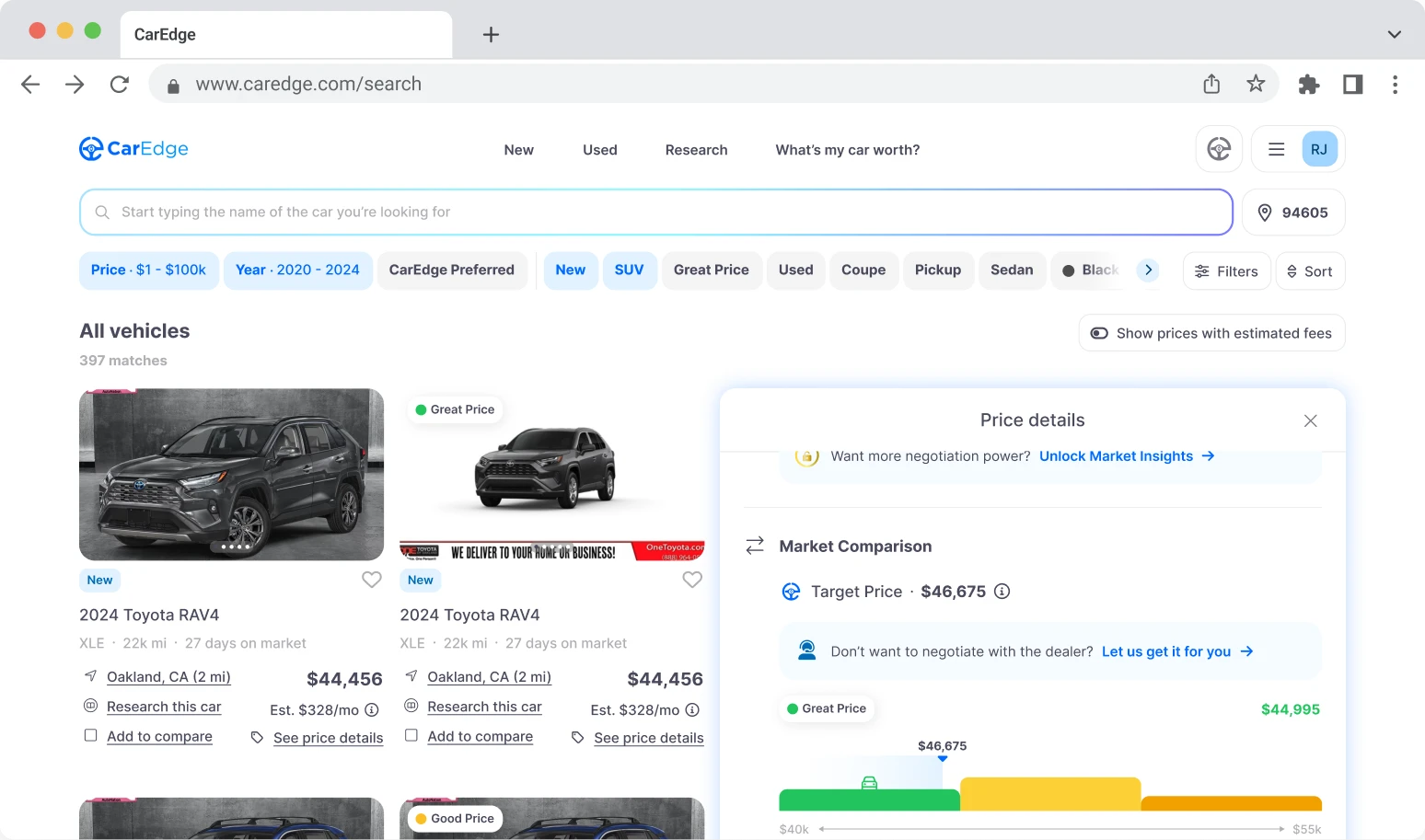

Help us personalize your CarEdge experience — it only takes a second.
Your answers help us personalize your CarEdge journey — we’ll follow up with tips and next steps that match your buying timeline.

We recently shared the 2023 models with the biggest price hikes. Now, we’re back with the cars and trucks with the smallest price hikes for the 2023 model year. I must say, there are some surprises here. We’ll start off by taking a look at the price trends for the 25 best-selling models in 2022. Unfortunately, Honda grabs the attention with some of the most anti-consumer price changes in recent memory.
Let’s dive in.
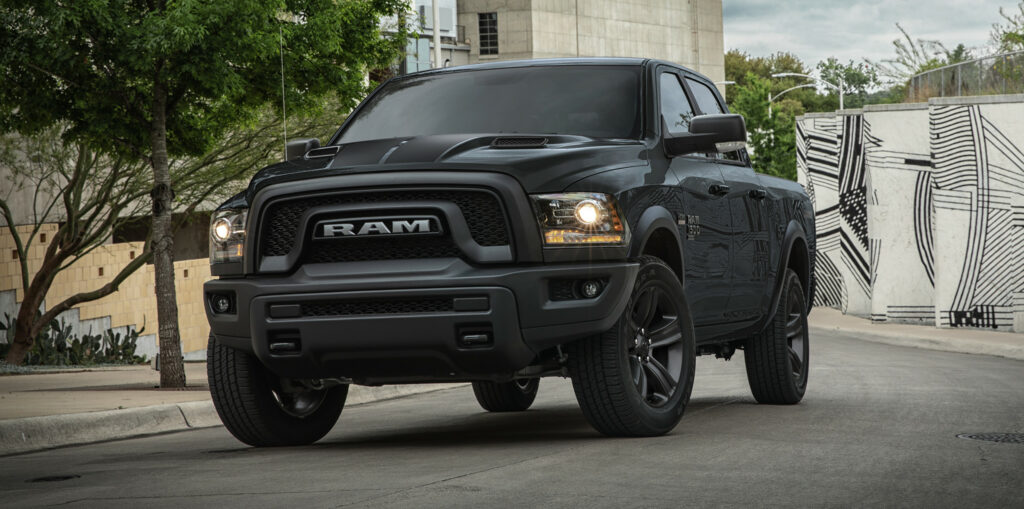
The table below shows 2023 pricing for base models and mid-spec trim options in an effort to provide more useful price comparisons. We’ve included how much the 2023 pricing has changed as a percentage.
Notice that two of the top-selling models actually have price decreases for 2023. And after years of demand outpacing supply, Tesla prices are holding steady. Still, the vast majority have MSRP increases between 3% and 10%.
America’s best-selling vehicle is now a lot more expensive. The 2023 F-150 Lariat, the popular mid-spec truck, is now $8,440 more expensive. The F-150 Limited sees a similarly huge price bump, and now tops out at $85,950. Apparently the F-150 now has Super Duty pricing. The F-150 Lightning went from a $40,000 electric truck, to a $60,000+ EV.
Update January 16th, 2023: Tesla has slashed their prices by up to 20% for some models.
What the heck is going on at Tesla? Overnight they dropped the price of the Model Y Long Range to $52,990, a full $13,000 less than its previous price of $65,990. 🤯 pic.twitter.com/EcZo6wXIiY
— Zach Shefska (@shefska) January 13, 2023
Tesla prices rose 25% from 2021 through early 2022. Now, prices haven’t changed since June 2022. In China, Tesla prices have actually fallen, leading to in-store protests from frustrated customers who bought a few days too soon. The Rear-Wheel Drive Model 3 does now qualify for up to $7,500 in federal tax credits. More on that here.
The Full Story: What’s in Store for Used Tesla Prices in 2023
It’s a frustrating trend, one that we hope Honda fans will speak out against. Honda clearly wants you to spend more in 2023. As with the CR-V, they’ve dropped the base Civic LX, effectively raising the entry-level Civic to $26,145 in 2023. It’s happening to the 2023 CR-V too. Honda eliminated the base LX trim, forcing a nearly $5,000 price increase for the entry-level CR-V.
At least Honda is offering several more options for those wanting a hybrid powertrain in 2023. The Sport, EX-L, Sport-L and Touring trims all come as hybrids. The 2023 Touring Hybrid starts at $38,985, which is $600 LESS than the 2022 Accord Touring.
Our Expectations For Car Price Trends in 2023: Car Prices Fall as Dealers Suffer
The 2023 Ford Escape gets a complete makeover, and with it comes a new trim lineup. That makes price comparisons tricky, but like for like, the 2023 Escape’s pricing remains about the same. In fact, the 2023 Escape ST-Line is $1,000 cheaper than the outgoing 2022 Escape SEL, its closest analog. Higher trims of the 2023 Ford Explorer also see steady prices.
We can’t say the same about other Ford models. The F-150 is seeing prices go up by 7% to 17% in 2023, and the all-electric F-150 Lightning now costs about $20,000 more than it was originally priced.
Toyota Corolla prices have actually gone down in 2023 for the Hybrid LE as Toyota makes way for the new hatchback Corolla. The 2023 Corolla Hatchback SE starts at $24,060 with destination fees.The Camry and Highlander also saw very minor price increases, with prices going up by about 1% across trim levels.
Altima prices nudged up slightly, but that’s no surprise. Nissan’s Altima sales have been on the decline for years now. In 2019, Nissan sold 209,000 Altimas in the U.S. In 2022, Nissan sold 140,000 Altimas in the American market.
New car prices are trending ever higher, even as supply finally catches up to demand. So, where are the best car deals in 2023? Head on over to the used car market for lower prices. Used car prices have been falling for several months, and we expect this trend to continue. Here are some CarEdge resources to get you started on your journey:
The Latest Used Car Price Update (Weekly Updates)
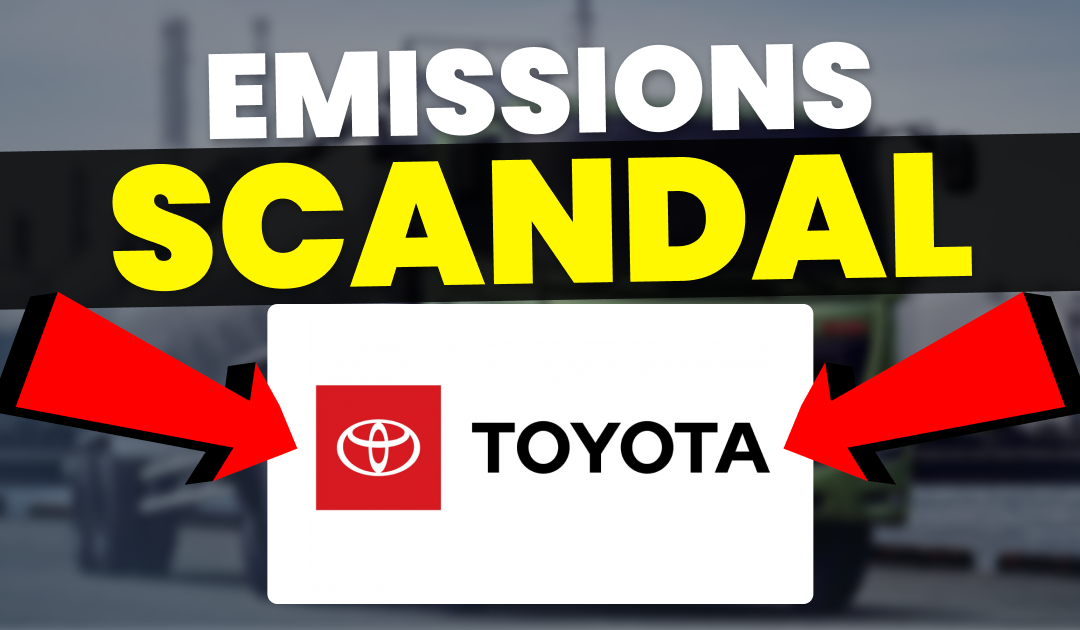
Who would have ever thought we’d have a Toyota emissions scandal to cover. When Volkswagen was caught red-handed in 2015, its entire leadership structure was turned on its head. Seven years later, Volkswagen is still fighting to improve its image, and the automaker is turning to electric vehicles in hopes of winning forgiveness. Now we’ve learned about a different emissions scandal dating back nearly 20 years to 2003. This time, it’s from a Toyota owned brand; Hino Motors.
Will the Hino emissions scandal spill over to Toyota’s corporate leadership? In an investigation that keeps growing, new revelations suggest this is far from over.
Today’s news is not the first Toyota “emissions scandal”. At the beginning of 2021, Toyota paid $180 million over Clean Air Act violations and settled with the United States federal government after a decade-long period (2005 to 2015) of misreporting emissions data.
From Car and Driver:
“Under the Clean Air Act, automakers are required to notify the EPA when there are 25 or more vehicles or engines in a model year with the same defect in an emission-control component, according to the government’s court filing against Toyota, which said Toyota was late in filing as many as 78 emission defect reports.”
The United States lawsuit claims that Toyota employees in Japan knew of the issue and did not rectify it. Interestingly, the same pattern of behavior was identified today in the Hino Motors scandal.
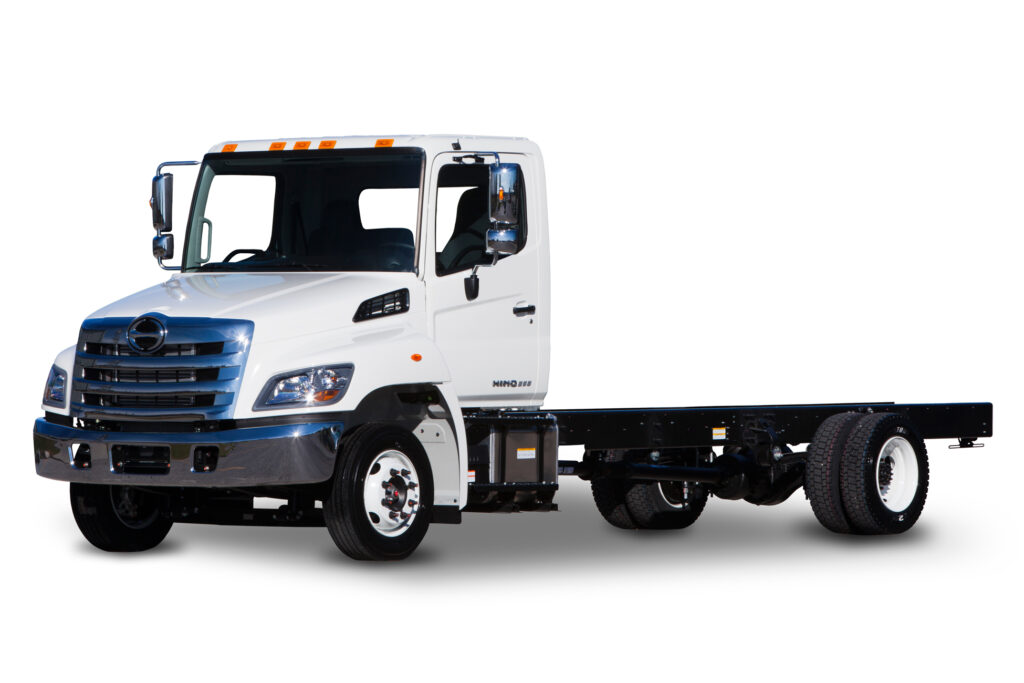
Hino Motors represents the Toyota Group in the global market for medium- and heavy-duty trucks and buses. Unlike the emissions scandal that Toyota settled last year, in this case, Hino Motors cheated emissions testing for 20 years.
Although most American drivers are not familiar with Hino, they do have a rapidly growing presence in the United States. Hino Motors is the fastest growing medium-duty truck brand in the U.S., and Hino dealerships can be found throughout the nation. Thousands of Americans are employed in Hino’s two American manufacturing plants, and dozens of sales and delivery centers.
In North America, Hino builds trucks in West Virginia, North Carolina and Canada. However production was halted for the first 10 months of 2021 as Hino had issues getting its engine certified in the U.S.
How could a foreign, little-known brand dominate so much of the commercial truck market that much of America’s supply chains rely on? Toyota owns 51% of Hino Motors. Considering that Toyota is the #2 automaker by sales in the American market, saying that Hino has a head start is an understatement.
Used car prices are dropping FAST. See the latest weekly data.
Earlier this year, Hino executives issued a public acknowledgement and apology for cheating emissions testing for nearly 20 years, and possibly longer. President Satoshi Ogiso bowed and apologized to customers and other stakeholders.
“I am so deeply sorry,” President Ogiso said. “Unfortunately, misconduct had been carried out for a widespread variety of models.”
Six months later, the investigative committee tasked by Hino Motors blamed the scandal on an environment where engineers feared challenging superiors in a toxic, high-stakes workplace. The committee’s report details an inflexible atmosphere that was constantly expected to live up to past achievements.
Investigative committee chairperson Kazuo Sakakibara, who is also a former prosecutor, told reporters that engineers and executives lost sight of values.
“The magnitude of their past successes has made them unable to change or look at themselves objectively, and they have been unaware of changes in the external environment and values,” he said in a press briefing.
So far, it is known that Hino cheated emissions testing on four engines used in medium- and heavy-duty trucks sold globally. Hino has recalled 47,000 trucks made between April 2017 and March this year, and Hino said an additional 20,900 would be recalled. With the latest revelation that emissions troubles date to at least 2003, the recall could be expanded to older model years.
Japan’s transportation ministry, which revoked the truck maker’s certification of the affected engines in March, said it would conduct an on-site investigation of the company.
Hino is essentially Toyota’s truck unit. Could the corporate problems spill over to Toyota as a whole? There are no indications that they will at this point. The stakes have always been higher for Toyota, whose sales dwarf those of its Hino unit.
Emissions scandals have touched other Japanese automakers in recent years. In 2017, Subaru and Nissan were investigated by the Japanese government. In 2018, the government said Mazda, Suzuki and Yamaha had improperly tested vehicles for fuel economy and emissions.
Proecutors, whistleblowers and executives all point to notoriously rigorous corporate culture as the main culprit. Something has to change before Japan’s massive automotive industry, which accounts for nearly 3% of the nation’s gross domestic product and supports an even larger manufacturing industry, suffers larger repercussions.
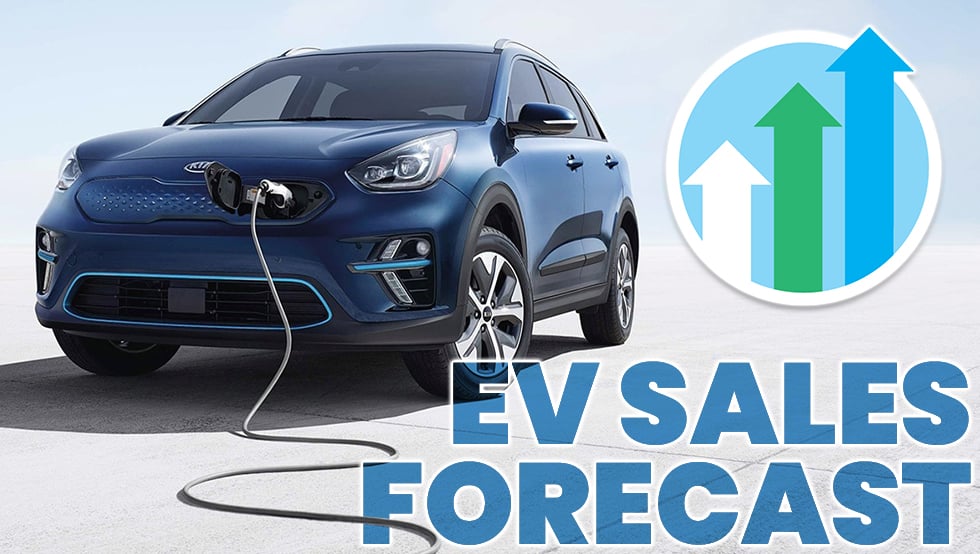
As much as I love electric vehicles, their faults are not lost on me. Charging infrastructure lacks, service outside of warranty is costly, and most of all, they’re really expensive. Despite the hurdles facing EVs in 2022, a new Bank of America Merrill Lynch Car Wars study predicts that EVs, PHEVs and hybrids will make up 60% of new models in 2026. With so many new electric cars coming making debuts in 2023 and 2024, time is running out to prepare the masses for the big changes ahead.
Every year, Bank of America Merrill Lynch releases their cleverly-named Car Wars report. The report leverages the bank’s access to big data to forecast automotive industry trends like no other. In the 2022 Car Wars Report, John Murphy, a senior auto analyst at Bank of America Merrill Lynch, told Automotive News that he expects automakers to launch roughly 245 new models over the next four years. That averages out to 61 new models per year — 50 percent higher than the average over the past two decades.
Why the flood of new car models? Simply put, new powertrains inspire new models. No one wants to retrofit a billion-dollar electric powertrain onto a decades-old chassis.
Analysists took the strategies of each major automaker into consideration and shared their market share forecasts for model year 2025. Notably, Stellantis and Nissan are forecast to lose market share despite funneling billions of dollars into new electrified models. General Motors, Honda and European brands are forecast to maintain steady market share in the U.S. market. With the upcoming Silverado EV, Cadillac Lyriq and Equinox EVs just around the corner, it’s not what automakers like to hear at such a crucial moment.
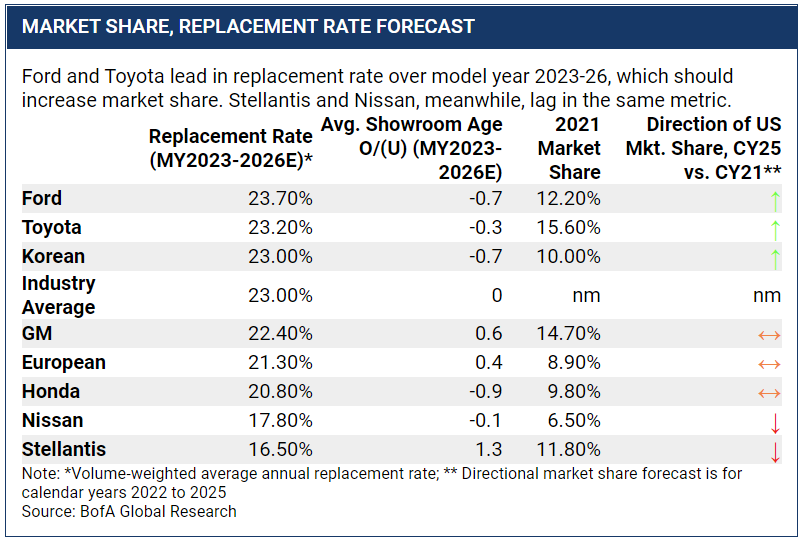
The automakers with the highest model replacement rate fared best in the Car Wars analysis. Ford, Toyota and the Korean automakers have the highest expected replacement rate, and therefore are expected to gain market share.
However it’s what Bank of America thinks about Tesla that’s drawing headlines.
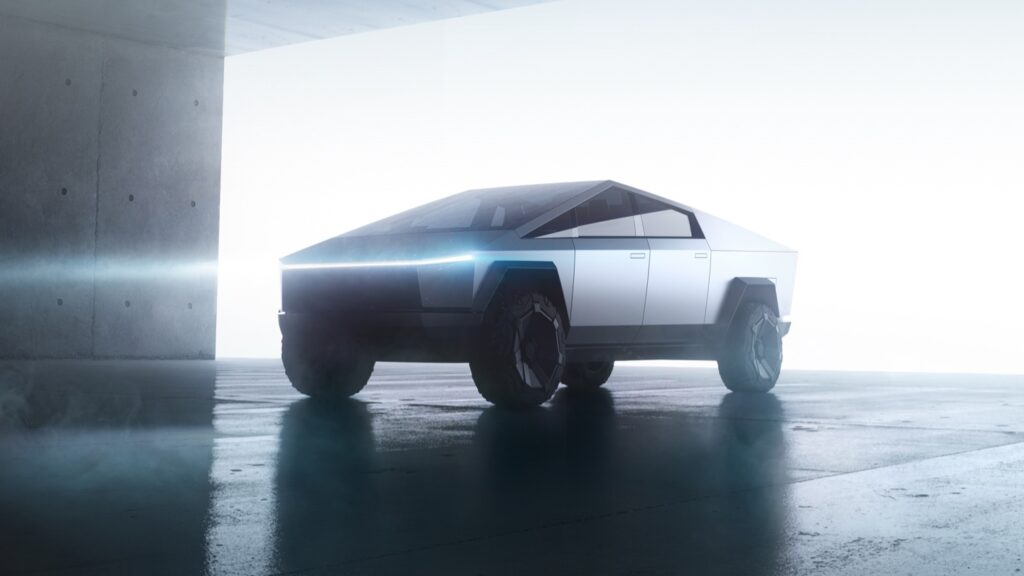
In the annual Car Wars study, Bank of America Merrill Lynch senior auto analyst John Murphy predicts that Tesla’s EV market share will drop from over 70% today to just 11% in 2025. That’s the most pessimistic Tesla forecast we’ve seen in a few years, harkening back to when talking heads from legacy automakers regularly predicted doom and gloom for Tesla.
Why the forecasted 60% drop in market share? Murphy cites the massive push to electrification from the likes of Ford, General Motors, Hyundai and Kia. It’s not clear if Murphy considered the significance of Tesla’s Supercharger Network, top-notch over-the-air update capabilities and high brand loyalty in his forecast. What do you think?
Looking for EV sales numbers? July is here, and that means the second quarter of 2022 has come to an end. As automakers release their Q2 2022 EV sales numbers, be sure to check the latest updates and statistics at CarEdge’s EV market share and vehicle sales report.
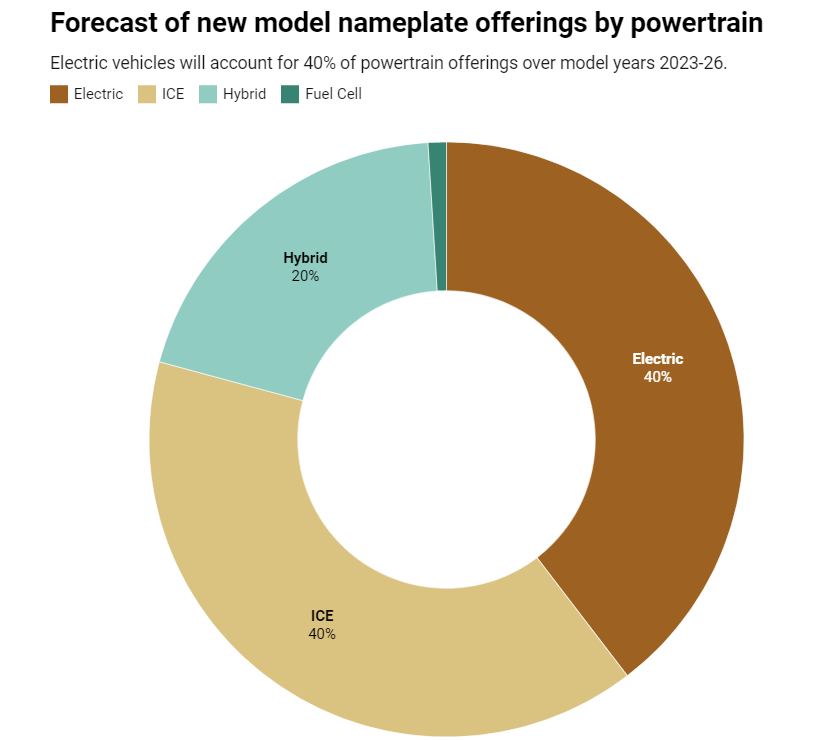
Of the new models introduced between 2023-2026, 60 percent will be either electric or hybrid while 40 percent will be internal combustion. Among notable 2023 electric cars just around the corner are electric trucks, sedans, and a whole lot of crossovers.
Headline-grabbing claims aside, this EV market share forecast is in line with much of the industry’s thinking. In fact, automakers are sure to hope that these numbers become reality, as they are actively investing a cumulative total of roughly $500 billion dollars in electrifying their lineups.
With high-stakes new electric cars in 2023, legacy automakers are definitely taking EVs seriously. Which 2023 electric car are you most excited about?

We hear it all the time: electric cars save you money. Electricity is cheaper than gas, EVs require less maintenance, and incentives abound. However, there’s no hiding the fact that electric vehicles are expensive, especially the models with the best range, performance and charge rates. To shed light on the reality of electric vehicle savings, we dug deep into the data. How long does it take to break even when buying an EV? We were surprised with what we found.

The X4 is one of the most direct competitors to the 2022 Tesla Model Y, the best selling electric vehicle in America. Although Tesla models no longer qualify for the federal EV tax credit, the cost of the BMW X4 and high fuel consumption make this an interesting comparison.
| Model | MSRP | Price Difference | Incentives | Fuel Economy | Range | Time to Refuel | Cost to Refuel ($5.00/gal or $0.14 per kWh) | Annual Fuel Cost (15,000 miles) | Average Annual Maintenance Cost | Time to Break Even |
|---|---|---|---|---|---|---|---|---|---|---|
| BMW X4 xDrive30i | $51,800 | -- | 24 MPG | 413 miles | 5 min | $86.00 | $3123 | $228 | ||
| Tesla Model Y Long Range | $62,990 | +$11,190 | State and local only | 3.8 mi/kWh (125 MPGe) | 330 miles | 20 to 30 min | $10.50 | $477 | $77 | 4 years |

Pickup trucks get the worst fuel economy. It’s just a matter of physics; the shape of a truck is not aerodynamic, and they’re often heavy. The F-150 Lightning weighs 35% more than the gas-powered F-150. So you would think that the time to break even would be shorter when buying an electric truck over the combustion equivalent.
This side-by-side comparison highlights the importance of price parity for EVs. When EVs are similarly priced to ICE vehicles, the cost of ownership savings are crystal clear. But what about when the electric version costs over $25,000 more out the door? Have a look for yourself.
| Model | MSRP | Price Difference | Incentives | Fuel Economy | Range | Time to Refuel | Cost to Refuel ($5.00/gal or $0.14 per kWh) | Annual Fuel Cost (15,000 miles) | Average Annual Maintenance Cost | Time to Break Even |
|---|---|---|---|---|---|---|---|---|---|---|
| Ford F-150 Platinum 4WD 3.5 | $62,070 | -- | 20 MPG | 520 miles | 5 min | $130.00 | $3750 | $228 | ||
| Ford F-150 Lightning Platinum | $90,874 | +$28,804 | Fed, state and local | 2.1 mi/kWh (70 MPGe) | 320 miles | 45 min | $18.34 | $860 | $77 | 9.5 yrs (7 yrs with tax credit) |
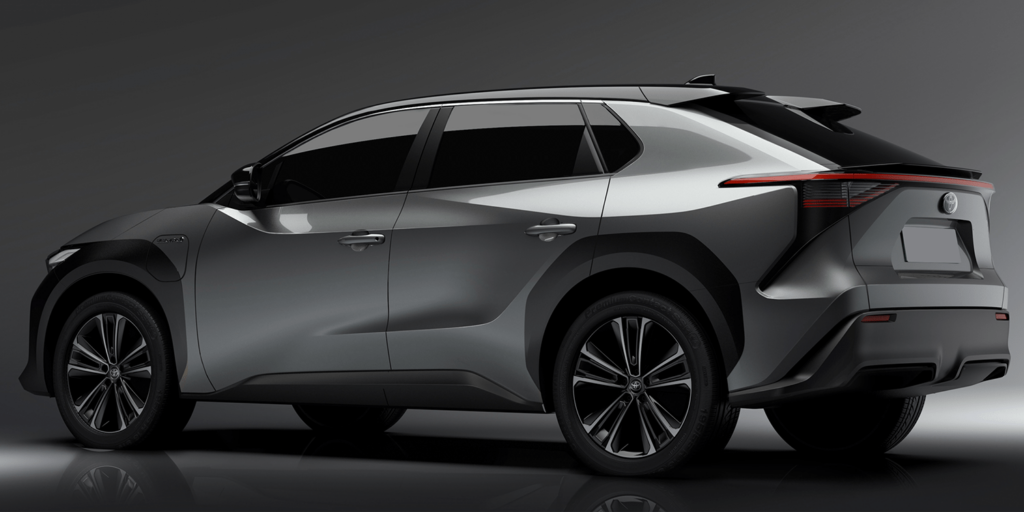
Toyota sells nearly half a million RAV4s every year. Will things change now that Toyota has launched its first fully-electric vehicle? The all-new bZ4X lacks the range and charging speed to compete with the best in 2022’s electric segment, but how does it stack up to the popular RAV4 hybrid? How long would it take to break even when paying a premium for the electric bZ4X?
| Model | MSRP | Price Difference | Incentives | Fuel Economy | Range | Time to Refuel | Cost to Refuel ($5.00/gal or $0.14 per kWh) | Annual Fuel Cost (15,000 miles) | Average Annual Maintenance Cost | Time to Break Even |
|---|---|---|---|---|---|---|---|---|---|---|
| Toyota RAV4 XLE Hybrid | $30,545 | -- | 40 MPG | 580 miles | 5 min | $72.50 | $1,875 | $228 | ||
| Toyota bZ4X XLE FWD | $42,000 | +$11,455 | Fed, state and local | 3.5 mi/kWh (119 MPGe) | 252 miles | 1 hour | $10.19 | $606 | $77 | 8 years (2.7 yrs with tax credit) |
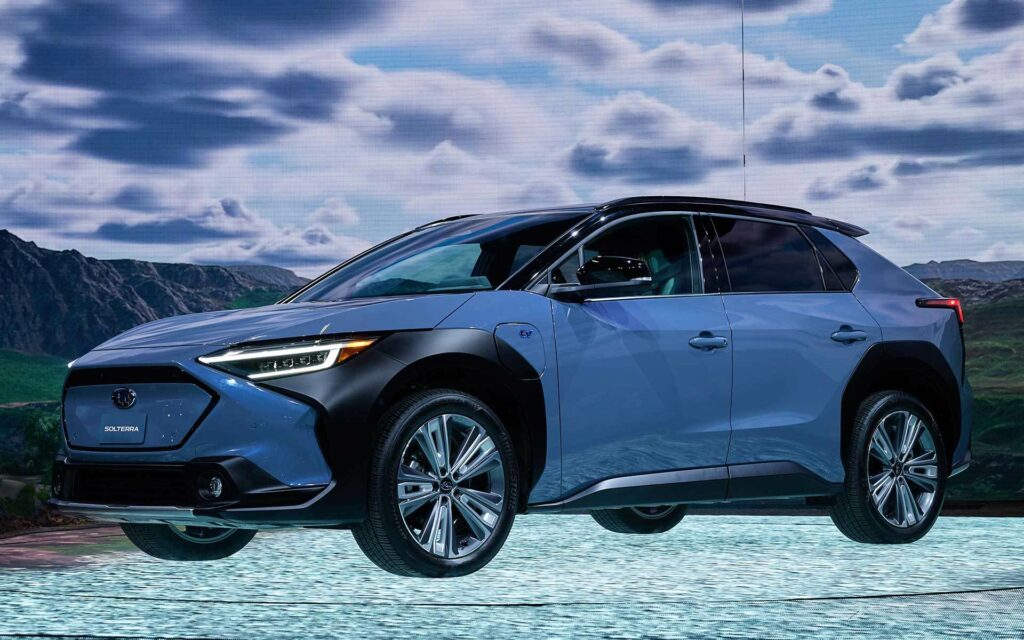
Subaru’s first EV is built on the same electric platform as the new Toyota bZ4X. Subaru is known for being Earth-friendly, but is the new Solterra EV friendly to your wallet? With range and charging figures more akin to 2015’s standards than today’s best EVs, the Subaru Solterra is off-road capable, but a tough sell for those who truly venture off the beaten path.
| Model | MSRP | Price Difference | Incentives | Fuel Economy | Range | Time to Refuel | Cost to Refuel ($5.00/gal or $0.14 per kWh) | Annual Fuel Cost (15,000 miles) | Annual Maintenance Cost | Time to Break Even |
|---|---|---|---|---|---|---|---|---|---|---|
| Subaru Forester base | $25,395 | -- | 29 MPG | 481 miles | 5 min | $83.00 | $2,588 | $228 | ||
| Subaru Solterra Premium | $46,220 | +$20,825 | Fed, state and local | 3.1 mi/kWh (104 MPGe) | 228 miles | 1 hour | $9.97 | $677 | $77 | 10 years (6.5 yrs with tax credit) |
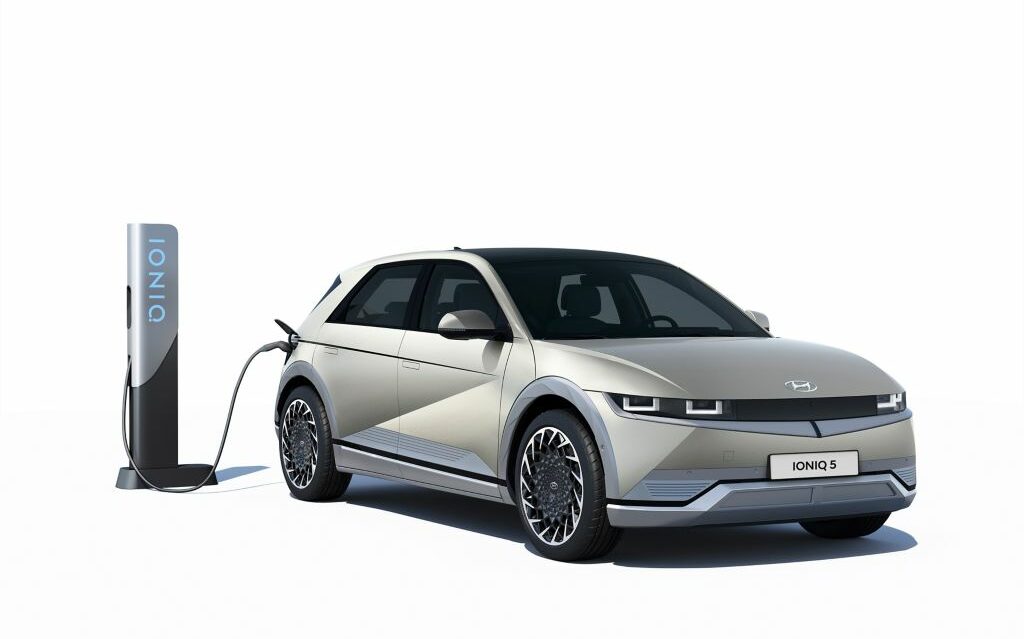
The Hyundai IONIQ 5 won big at the 2022 World Car Awards, but is it a winner for your wallet? It all depends on how much you drive, and how long you plan to keep the vehicle. The Hyundai Santa Fe just received a total makeover, and its price remains much lower than the IONIQ 5’s. Still, EVs are super efficient and electricity is cheap. Just how long would it take to break even when buying an IONIQ 5 EV instead of the more affordable Santa Fe crossover?
Disclaimer: I own a Hyundai IONIQ 5 Limited AWD, and it’s awesome.
| Model | MSRP | Price Difference | Incentives | Fuel Economy | Range | Time to Refuel | Cost to Refuel ($5.00/gal or $0.14 per kWh) | Annual Fuel Cost (15,000 miles) | Average Annual Maintenance Cost | Time to Break Even |
|---|---|---|---|---|---|---|---|---|---|---|
| Hyundai Santa Fe SEL | $27,875 | -- | 26 MPG | 489 miles | 5 min | $94.00 | $2,883 | $228 | ||
| Hyundai IONIQ 5 SEL RWD | $45,900 | +$18,005 | Fed, state and local | 3.4 mi/kWh (114 MPGe) | 303 miles | 20 to 30 min | $10.15 | $502 | $77 | 7 years (4.2 yrs with tax credit) |
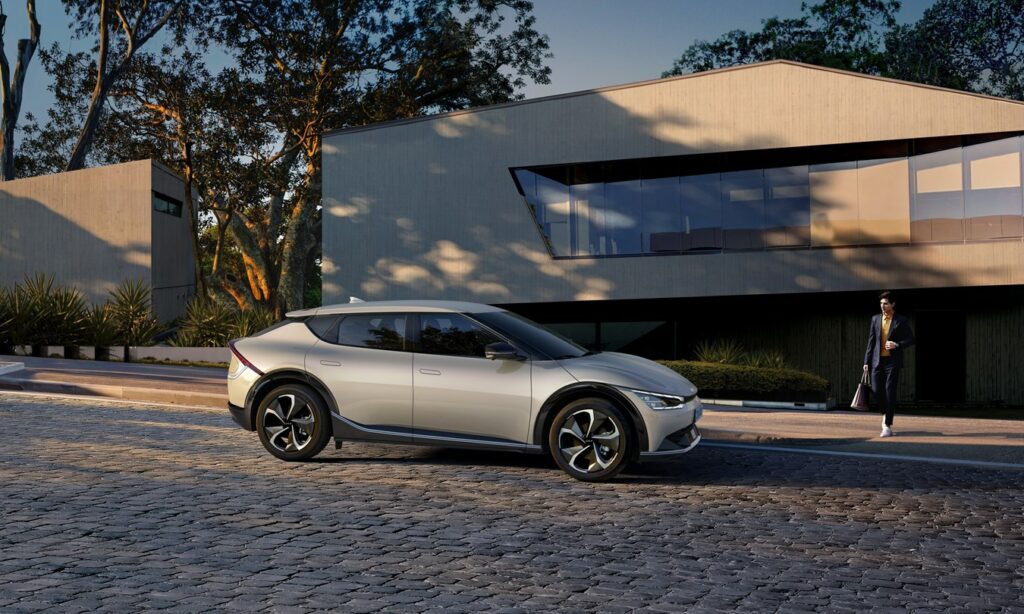
In many states and localities, thousands of dollars of additional incentives are available. Colorado, Connecticut, Delaware, Maryland and California are just some of the states with very generous EV incentives. State and local incentives can reduce the time to break even considerably. For example, in Delaware, buyers of the Hyundai IONIQ 5 will break even versus the Santa Fe in just 3.5 years with the federal EV tax credit and state rebates factored in.
Conversely, for car buyers who can’t take advantage of the federal EV tax credit or any state incentives, it will take many more years to reap the full savings of switching to an electric vehicle. In the case of the new Ford F-150 Lightning, it could take up to 8 years to break even without any incentives, assuming 15,000 miles per year of driving.
Check this out >>> The North Carolina Clean Energy Technology Center’s DSIRE database is the BEST one-stop resource for all EV incentives. Plus, you’ll see what solar power incentives are available in your area too.
The difference between driving 10,000 miles per year and 20,000 miles per year is massive when it comes to realizing the savings of driving an EV. The average American driver travels about 14,000 miles per year in their vehicle. Simply put, long-distance commuters, frequent travelers and fleet operators will see the greatest cost savings of going electric.
With the 2023 Ford F-150 Lightning, a driver who travels 15,000 miles per year and can take advantage of the full $7,500 federal EV tax credit should expect to break even versus a combustion F-150 in 7 years. However, if they drive 25,000 miles per year, the break even period narrows to just 4 years. After that, they will be saving roughly $4,000 every year in fuel and maintenance costs. Clearly, EVs make more sense as a long-term purchase.
The maintenance figures included in this cost comparison is sourced from We Predict, a Michigan-based data analysis company. They dug deep into automotive maintenance data and found that during the first three years of vehicle ownership, the average annual maintenance for an electric vehicle is just $77. And based on personal experience, that’s likely for new tires (EVs are MUCH heavier).
During the same period, combustion vehicles average $228 in annual maintenance, with most of the costs in the first few years going towards oil changes and the like.
We may be underestimating the maintenance savings associated with going electric when comparing luxury brands. For example, BMW is notorious for costly maintenance. Opting for a Tesla Model Y over a BMW will likely result in even greater maintenance savings, and therefore a reduced break-even period.
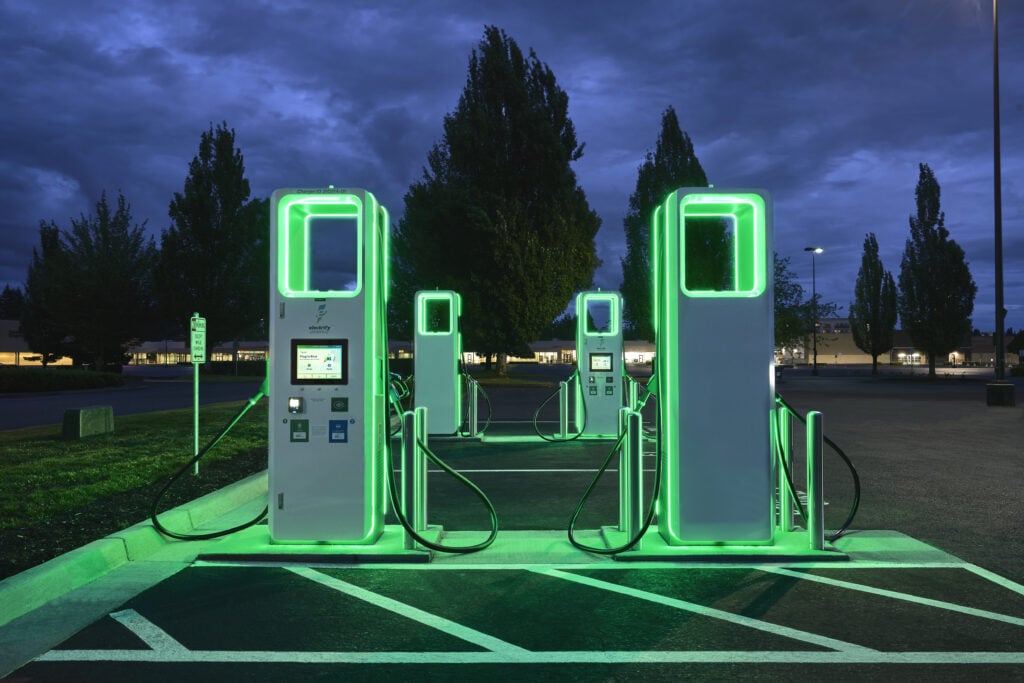
As of early June 2022, the average gas price in the United States is $4.87 per gallon. In California, it’s $6.34. Nevada, Hawaii, Washington, Oregon and Illinois all have gas prices much higher than the national average. In these states, EV drivers will see even greater fuel savings.
Let’s take a closer look at an example of someone purchasing a Hyundai IONIQ 5 in California. We’ll assume that the consumer qualifies for the full $7,500 EV tax credit and the $2,500 state rebate for a zero-emissions vehicle. They drive 15,000 miles per year. At gas prices of $6.34 per gallon, the break even point for the IONIQ 5 versus the Hyundai Santa Fe arrives in just 2.5 years, versus 4 years for the rest of the nation. That figure includes the 59% higher residential electricity rates in California.
What can we learn from this EV cost of ownership comparison? The specifics of your situation matter.
These are the most important questions to ask when deciding whether or not it makes sense to buy an EV in 2022. Have questions? Let us know in the comments, or better yet join the CarEdge family at caredge.kinsta.cloud/community. You can also reach me at [email protected]. We’d love to hear from you.

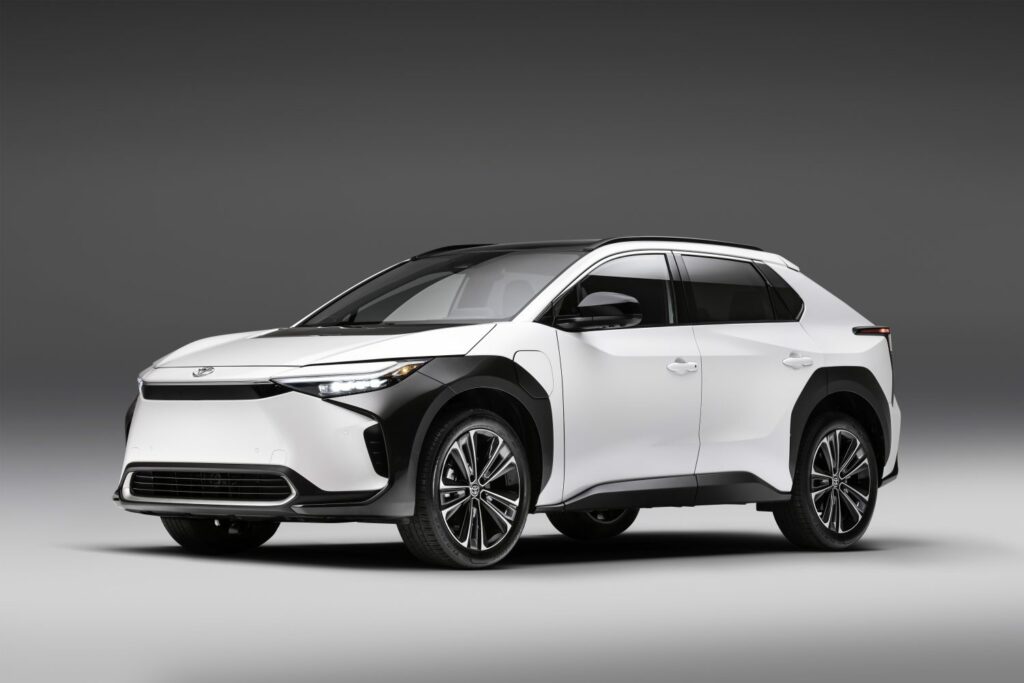
November 2022 Update
Is this the beginning of a Toyota EV scandal?
Norwegian EV testers have found that the Toyota bZ4X does not get anywhere close to achieving the claimed range, efficiency and battery capacity shared by Toyota. The most we’ll known EV testers in Norway, Elbil24, tested the AWD Toyota bZ4x three times in 70-degree weather, and we’re shocked with the data they collected.
Here’s a summary of what they found, but I recommend reading it for yourself at elbil24.no (using a translator). Elbil24 found that the AWD Toyota bz4x has a 62 kilowatt-hour usable battery, much lower than the 71 kWh Toyota claims. In standardized range testing with an outdoor temperature of 70 degrees F and with the climate control set to 73 F, the bZ4X drove just 190 miles on a full charge. Its efficiency is 25% worse than Toyota claims. Merely turning the climate control on dropped the range estimate by nearly 30%.
This isn’t the first poor showing for the model. Toyota bZ4X charging tests are bad to the point that it’s almost scary. InsideEVs previously found that it takes 90 minutes (yes, 1.5 hours) to charge the AWD bZ4X from 0% to 90% (adding 205 miles of range). Trying to get the car to 100% was pointless. It took another few HOURS. Check out their experience here.
Needless to say, we can’t recommend the Toyota bZ4X or its platform sibling the Subaru Solterra with testing showing huge disappointments. We’ll update this page as we learn more.
When Toyota unveiled the Prius hybrid in August of 2000, green tech and sustainability advocates jumped for joy, while the rest of the world pondered the reliability and durability of a hybrid gasoline-electric powertrain. Toyota proved to the world that it was on to something, and has since gone on to sell more than 15 million hybrid vehicles globally. Over 22 years later, Toyota has launched its first-ever fully-electric vehicle, the 2023 Toyota bZ4X. Has the bZ4X electric crossover been worth the wait? Well, it depends on your driving habits and budget. Here’s what we know.
For those who were anticipating an affordable EV from Toyota, I have some bad news. The 2023 bZ4X starts nearly $17,000 above the entry-level RAV4, and $12,000 over the RAV4 XLE Hybrid. The bZ4X is offered in two trims: XLE and Limited. The front-wheel drive XLE starts at $43,215 with destination. Adding dual-motor all-wheel drive to either trim will tack on $2,080. The Toyota bZ4X Limited with all-wheel drive comes out to $49,995. Of course, these MSRPs are before any dealer markups.
Although the bZ4X is Toyota’s first fully-electric mass-market vehicle, America’s best-selling brand sold enough Prius and RAV4 plug-in hybrids (PHEVs) to approach the sales cap enshrined in the existing federal EV tax credit. In 2022, the federal EV tax credit is worth up to $7,500, depending on your tax liability. Tesla and General Motors electric vehicles no longer qualify for this incentive after the two automakers exceeded their 200,000 sale limit, and completed the phase-out period.
Analysts (and even Toyota itself) estimate that the bZ4X will remain eligible for the full $7,500 EV tax credit through 2022. Soon after, they expect to hit the 200,000 sale limit, and the one-year phase out period will ensue until the credit disappears entirely.
State incentives in the form of rebates, tax credits and tax exemptions promote EV adoption in a number of states around the country. Find out if your state offers generous incentives here.
Toyota will offer bZ4X owners and lessees one year of free fast charging at EVgo stations.
EVgo is America’s third-largest public charging network behind Tesla and Electrify America. Over 800 DC fast chargers are located around the U.S., with most located on the coasts, Texas and Great Lakes region.

Before you get too excited about free charging at EVgo, let’s talk charging capabilities. Electric vehicle enthusiasts like myself are puzzled by the outdated charging speeds of the 2023 bZ4X. The front-wheel drive bZ4X is capable of charging at up to 150 kilowatt speeds, which isn’t bad (if the charging curve can sustain that). However, the more powerful and likely more popular all-wheel drive bZ4X is only capable of charging at 100 kilowatts. Why the difference? Battery supply shortages forced Toyota to source the batteries for these two powertrain variants from two different suppliers. And with these charging speeds, it almost seems like Toyota was scraping the bottom of the global battery barrel.
The bZ4X’s charging times are wild, and not in a good way. A recent bZ4X charging test by Kyle Conner of Out of Spec Reviews found that it took 58 minutes (an hour!!!!!) for the AWD bZ4X to charge from 10% to 80%.
Additionally, InsideEVs found that it took 93 minutes to charge from 0% to 90%. That’s NOT normal for an EV in 2022. For comparison, my very own Hyundai IONIQ 5 accomplishes the same feat in 20 minutes, and Tesla’s can do that in 15 minutes. Over 80% of EV charging is done at home overnight, but if you’re a frequent traveler, be very wary of the Toyota bZ4X’s charging speeds.
The 2023 bZ4X’s range is merely okay. It would not be NEARLY as big of an issue if it could charge faster. The front-wheel drive bZ4X is rated for 242 miles with the Limited trim, and 252 miles on the XLE. Upgrade to dual-motor all-wheel drive, and range suffers. The AWD Toyota bZ4X is EPA-rated for 222 miles on the Limited, and 228 miles with lower trims.
Can Performance and Features Redeem Toyota’s First EV?
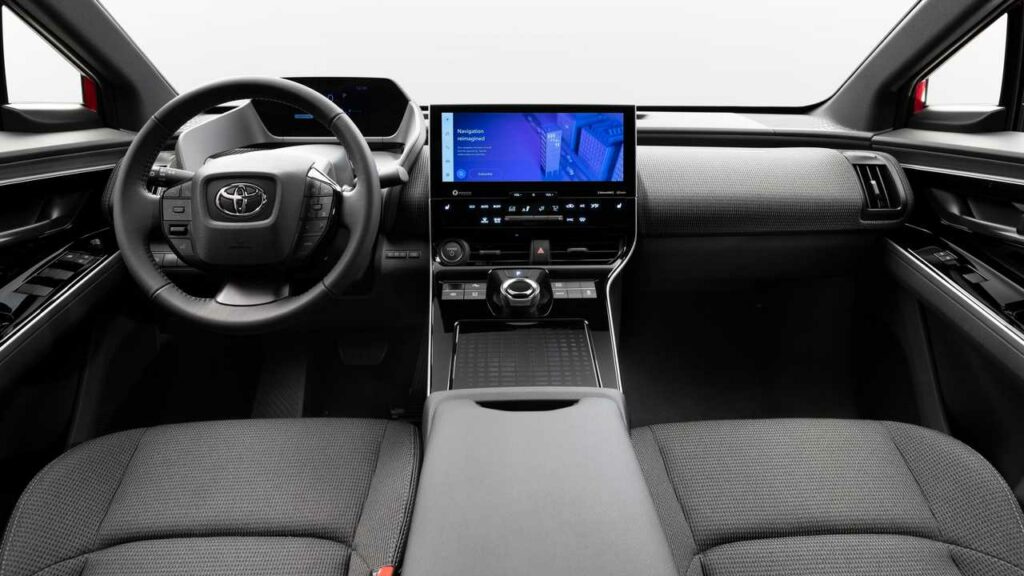
The bZ4X comes standard with a panoramic glass roof. There’s also adaptive cruise control, lane-departure warning, lane-keeping assist, blind-spot monitoring, rear cross-traffic alert, and Safe Exit Assist. The Limited’s features include a motion-activated power liftgate, a heated steering wheel, heated and ventilated front seats, an upgraded camera, 20-inch rims and faux-leather upholstery. Does that make it worth the hours you’ll spend charging? I’m not so sure.
Toyota’s first EV is loaded with safety features, but bZ4X charging and range capabilities leave a lot to be desired. With the all-wheel drive variant, you’re essentially buying 2016 tech at 2023 prices.
I know more than a few Toyota fans who are disappointed by the bZ4X’s specs. Will this EV turn out to be a winner for Toyota? Time will tell.